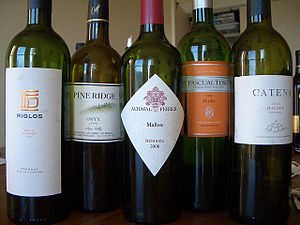
How-To: Do a Comparative Wine Tasting
Guest Post By Kristina N Anderson
To learn more about wine, it can be useful to do a tasting of similar wines to compare and contrast.
- A vertical tasting compares the same type of wine (varietal) from a single producer from different vintages. So, Chateau XYZ Chardonnay 2007, 2009, 2011.
- A horizontal tasting compares similar wines of the same type (varietal) and vintage from different producers. Chateau A 2011 Riesling, Chateau B 2011 Riesling, Chateau C 2011 Riesling. Typically producers are selected from one region.
- A comparative tasting is similar to a horizontal. Here, you compare wines based on just one similar element: varietal, vintage, producer, or region.
Comparing similar wines like this helps isolate the smaller differences. A trio of Rieslings, made by the same producer, in the same year, from different vineyards will end up with similarities in the flavors and aromas, but can help the taste buds recognize the subtle differences when directly compared. Generally, the wines are compared in stages: appearance, aroma, then flavor. As the wines are usually of a similar style and flavor profile, there is less concern over tasting order, as there is less chance of any one wine overpowering the flavor of the others.
During a comparative tasting, it is recommended to spit the wine. While the buzz from sipping from several glasses can be fun, it tends to dull the senses, and limit the ability to truly judge the differences.
In glassware, consistency is important. Connoisseurs say that the different shapes of glasses effect the aroma and impact of the flavors, so to compare the wines evenly its important to serve them from identical glasses. It is not recommended to do several tastings from the same glass if you can avoid it: the residue from the previous wine can influence the flavors of the current one, and a rinse will leave some water that will slightly dilute the wine.
Comparative tastings are common in the professional wine world, especially for judging wines in competition. In this case, the wines are often tasted blind; the label of the wine concealed when poured and tasted to avoid influencing the judges.
There is no defined number of wines for these types of tastings. Sometimes professionals will taste over 100 wines in one event. But, most of us will be overwhelmed by more than half a dozen tastes, and over a dozen makes it more of a chore than an enjoyable experience, in our opinion.
For more tips and information about wine, visit http://www.localvinacular.com
Article Source: http://EzineArticles.com/?expert=Kristina_N_Anderson
http://EzineArticles.com/?How-To:-Do-a-Comparative-Wine-Tasting&id=7302479
Related articles



